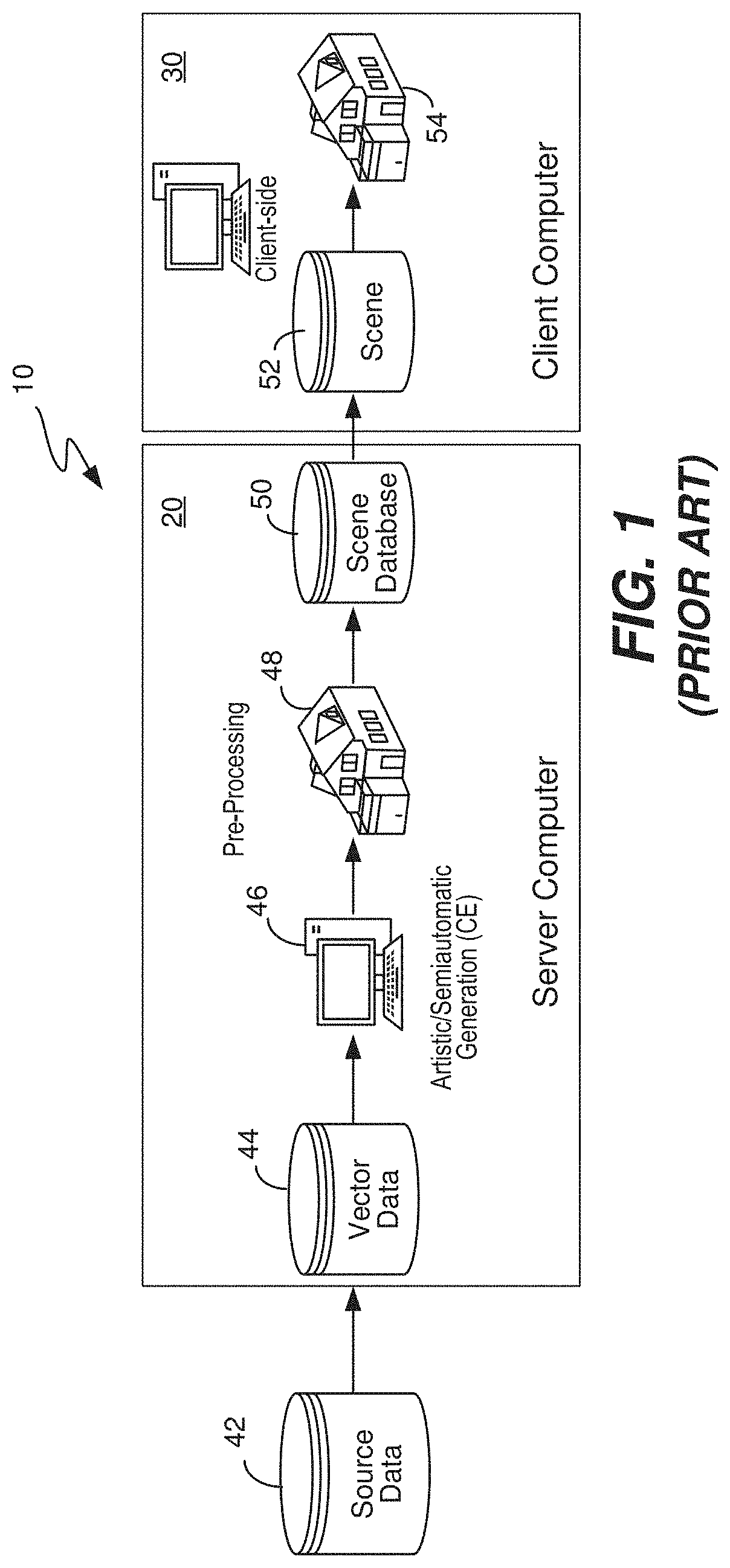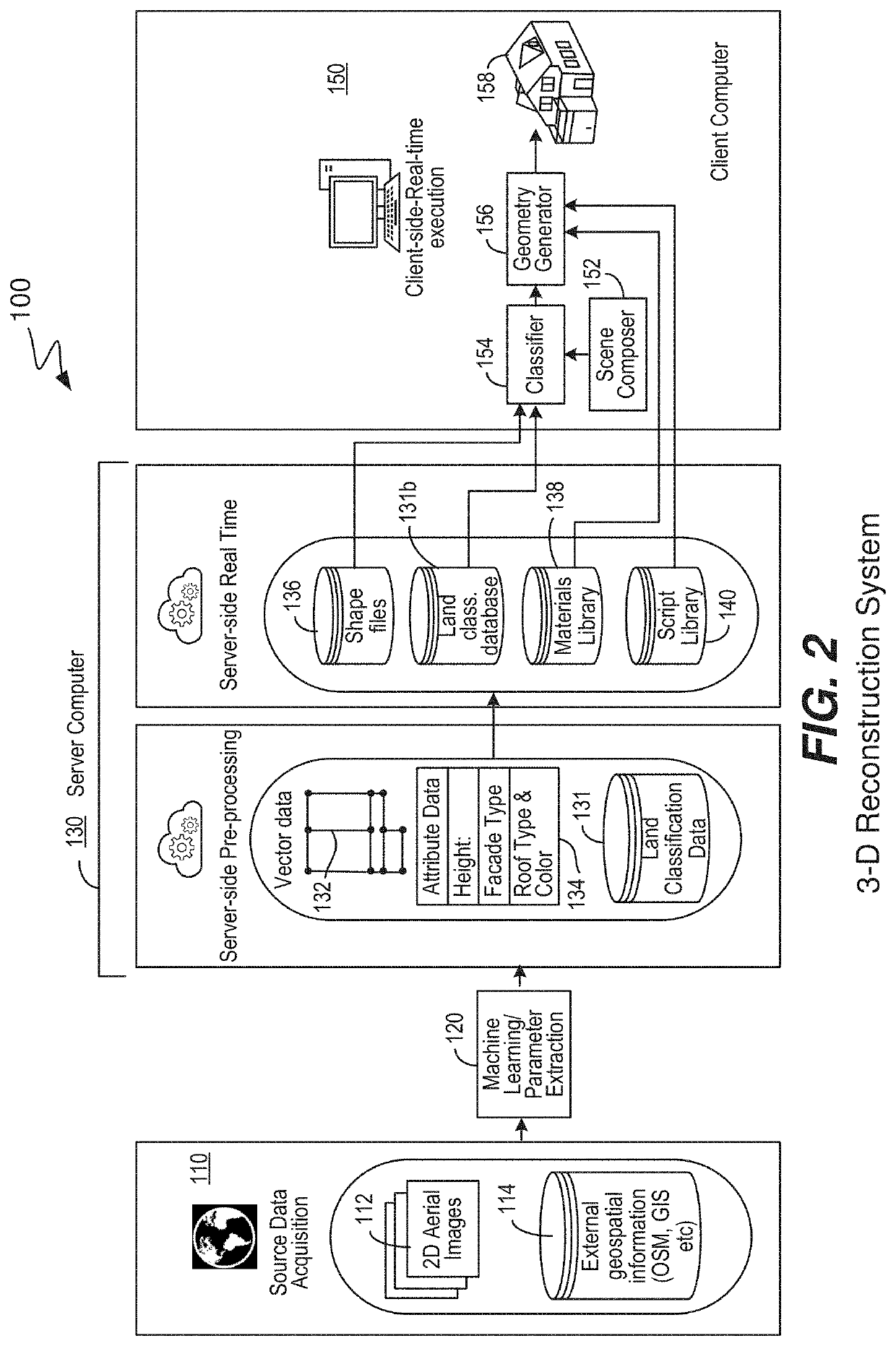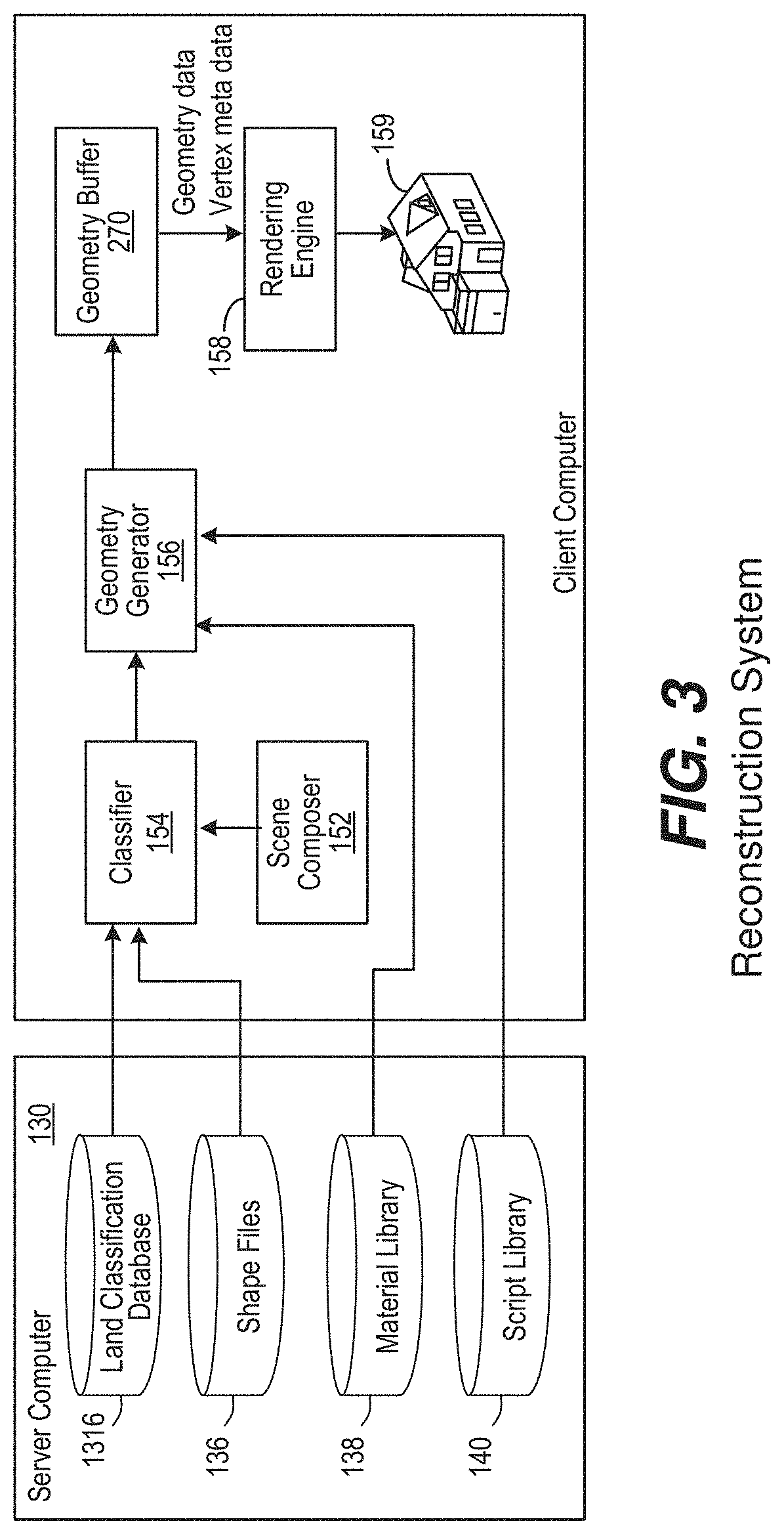Reality-based three-dimensional infrastructure reconstruction
- Summary
- Abstract
- Description
- Claims
- Application Information
AI Technical Summary
Benefits of technology
Problems solved by technology
Method used
Image
Examples
Embodiment Construction
[0035]FIG. 1 illustrates a prior art system 10 for rendering a three-dimensional environment on a client computer 30. Source data 42 is delivered to a server computer 20 in the form of vector data 44. A software engineer takes the vector data and using a semi-automatic process, generates on a computer 46 a 3-D representation of a building 48 (for example) which is stored in a scene database 50 in association with the server computer 20.
[0036]Source data 42 is typically vector data only (such as GIS data), but may also include two-dimensional aerial images, which are used as is to generate a building 48. When vector data is used, it is typically only a building footprint and a height. One example is the modeling software “City Engine,” available from Esri R&D Center, which uses such vector data to model a 3-D city. The output are buildings and other infrastructure of a city which are stored in scene database 50 in preparation for downloading to a client computer in real time as neede...
PUM
 Login to View More
Login to View More Abstract
Description
Claims
Application Information
 Login to View More
Login to View More - R&D
- Intellectual Property
- Life Sciences
- Materials
- Tech Scout
- Unparalleled Data Quality
- Higher Quality Content
- 60% Fewer Hallucinations
Browse by: Latest US Patents, China's latest patents, Technical Efficacy Thesaurus, Application Domain, Technology Topic, Popular Technical Reports.
© 2025 PatSnap. All rights reserved.Legal|Privacy policy|Modern Slavery Act Transparency Statement|Sitemap|About US| Contact US: help@patsnap.com



